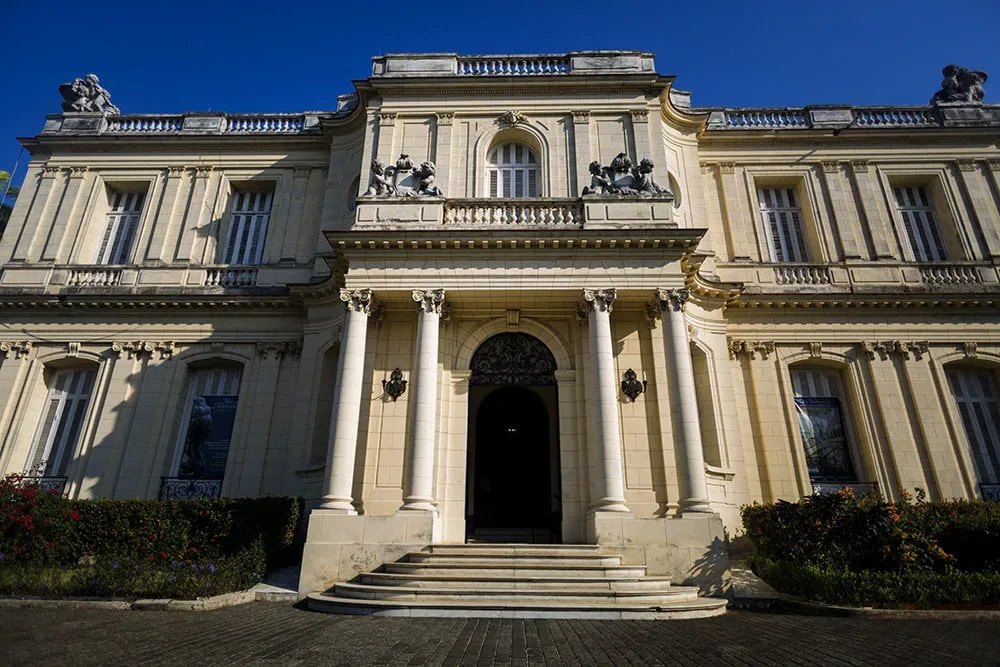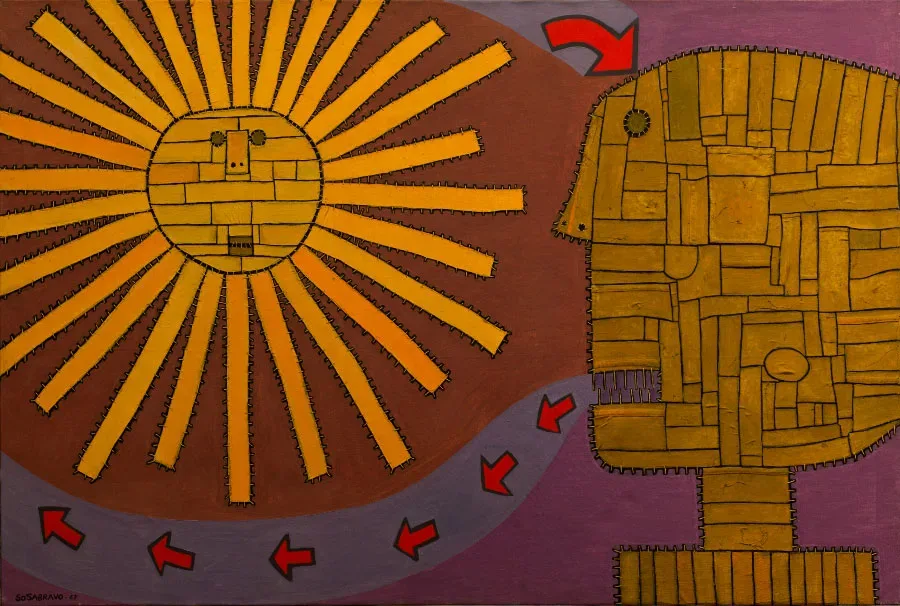Artistic and Historical Oasis
There is a singular institution situated on the corner of 17th street and E, Vedado, in Havana. An artistic and historical oasis which will trap the retinas and the sensibility of the spectator. Crossing the threshold of the National Museum of Decorative Arts constitutes the beginning of a long trip through the Art History, and a dialogue with several cultures.
The beautiful edifice was designed by the French architects P. Virad and M. Destuge, specialists from the Jansen House, Paris, and constructed in 18th century French style, with floors worked in Italian marbles. It constituted one of the residences of María Luisa Gómez Mena, well-known as the Countess of Revilla Camargo. On July 24, 1964 it became one of the first museums created by the Revolution, inaugurated by María Arjona, with Alejo Carpentier in charge of the opening words.
The institution treasures more than 33000 pieces of artistic and historical value, that go from a variety of European and Oriental objects from the 16th century to objects from our times. Some of them come from the reigns of Luis XV, Luis XVI, Napoleon III; Oriental pieces from the 16th to the 20th centuries; as well as French manufactures, from Sevres, Paris, Limoges, Chantilly, and from English cities like Chelsea, Worcester… Although most of the collection is centered in 18th and 19th centuries.
Decorative Arts, as its name indicates, constitute those related with ornamentation and decorations; including furniture, porcelain works, glasswork, ceramics, goldsmithing, wardrobe elements, textiles, jewels, leathers, and popular art pieces, among others.
A TRIP THROUGH TIME
Before entering the mansion, constructed towards 1924, the spectator could enjoy the beautiful gardens that surround it, where also architectonic and artistic elements are overflown, because of the many sculptures from the 19th century and others from the neoclassical style “planted” everywhere. Inside, in the eleven halls, it is served a variety of exquisite delicacies of styles and epochs in which the sight will take a great delight in good taste and beauty. Among the most interesting objects, the highlight is the Luis XVI secretaire; a piece of furniture belonging to Marie Antoinette, queen of France; created by the masters of the epoch Jean H. Rieseneer, cabinet maker, and Couthiere, bronze worker. While in the halls dedicated to Oriental lacs and to the Chinese folding screens from 17th, 18th and 19th centuries, those belonging to the Ming Dynasty, manufactured in 1575, in Jiangxi region can be emphasized, as well as a great screen of Coromandel (17th century). Porcelains are represented with English, German and French pieces, in addition to Japanese and Chinese, along with other nations that constitute a sample of the wide range in the work of those who promote this art, and of the exquisite sense of detail in decoration. Elements in silver, gold, bronze and ivory; huge paintings of masters such as Jean Marc Nattier (1685-1766), Hubert Robert (1733-1808), and many others, are included among the exhibited pieces.
Because of its beauty and harmony in decoration, the Principal Hall of the Museum is distinguished with its walls covered of boisseries, and with an atmosphere of Rococo style. It shows various types of furniture in this style, and others of Regency and Transition. There, several collections of biscuit can be enjoyed (unique pieces from Sevres manufacture), and Meissen porcelains, Chinese porcelain vases from the Qienlong period (18th century). The lobby is a singular place in which elements of the wide collection of furniture are shown. While in the Dining Hall, inspired in the Regency style, the Italian marbles cover the walls; where a beautiful clock with bronzes conferred to Cafieri (Jr.) and the mechanism constructed by Martinot, the clock maker of King Luis XV, emerges.
Other spaces are added. They are dedicated to the neoclassical period, with furniture from the Luis XVI epoch; to the Manufacture de Sèvres, as well as the Second Empire Hall that recreates this French period (1852-1871). Armchairs hand-carved by the English cabinet maker Thomas Chippendale (1709-1779), English silverwork from the 18th to the 20th century, vases Médicis of Worcester, among other valuable pieces which will dazzle the spectators in the English Hall; while the Principal Bathroom is dedicated to Art Deco. There are much more elements from Art Nouveau, Art Deco and Eclectic style that could be appreciated by those who decide to get closer to this artistic treasure. But the museum takes also into account the contemporary, as many works from contemporary creators from different latitudes appear in any moment in both transitory rooms of the institution; this permits the observation of the diversity in the decorative arts of these times.





